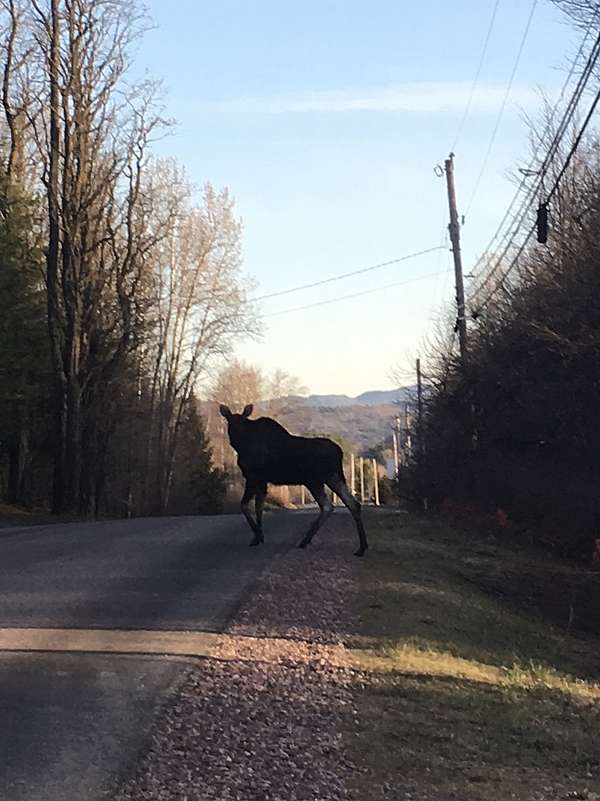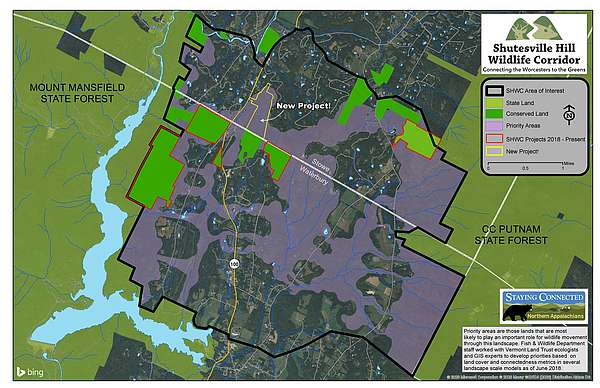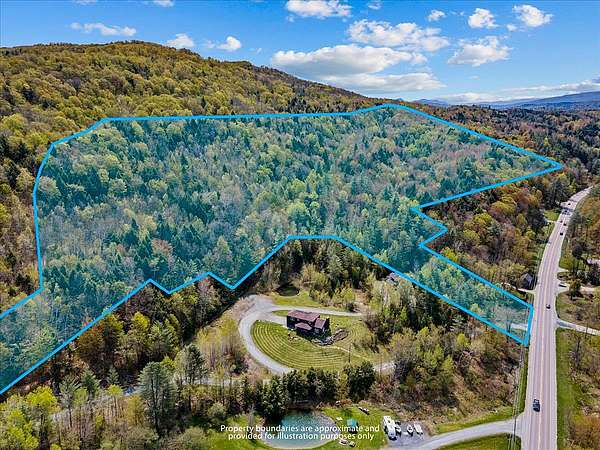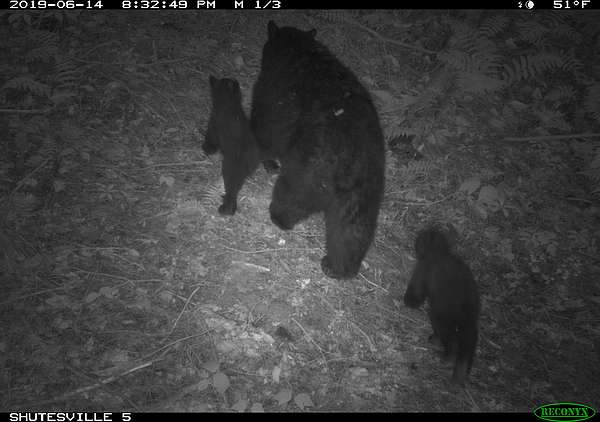The time to help the Shutesville Wildlife Corridor is now.
“The moose stopped in the middle of Route 100, right by the “Welcome to Waterbury” sign,” says Walt Looney. “Took a long look at us, then slowly continued into the woods. Even though we were in a car, it felt like we were on its turf.”
If you’ve spent much time traveling between Waterbury and Stowe, you may have had a similar experience. This is not a coincidence.
The “Shutesville Hill Wildlife Corridor” crosses Route 100 on the Waterbury-Stowe town line and is the only viable connection between the Green Mountains and Worcester Range. It is one of the five most important wildlife crossings in the state and a critical part of an international network of connected forest habitats in the northeast.
A far-reaching connection
At first glance, the key road crossing right in the corridor might not seem so different than any other section of state road in Vermont. To the passing motorist, only a handful of “Wildlife Crossing” signs hint at the importance of this several mile stretch of highway, and the connected forest habitat it bisects.
“Shutesville Hill is an amazing, critical resource for wildlife,” says Jens Hilke, Conservation Planner with the Vermont Fish and Wildlife Department. “It is the only pathway of large, connected forest habitat that links the Worcester Range to the Northern Green Mountains. It’s part of a much larger swath of forest that serves as a connected network across the entire Northern Appalachians. There’s simply no other connector in the region as important for wildlife on the move, especially in the face of a changing climate.”
Landscape under threat
Yet, the future of the corridor is far from secure.
Previous construction has fragmented habitat for many species of wildlife, including hallmark animals like black bear, moose, deer and bobcat. Mounting development pressure poses a looming threat to wildlife’s ability to migrate.
In the face of a changing climate, 50% of species globally are on the move to find suitable and cooler homes according to Dr. Greta Pecl, Professor of Climate Change Ecology at the University of Tasmania.
Ensuring there is a safe route between large, higher quality blocks of forest is vital to ensuring Vermont’s wildlife will thrive for generations to come. They need our help.
Stitching together the pieces
Since 2010, a group of local, statewide, and international conservation organizations have been coordinating with each other and local landowners and communities to find a solution. The Shutesville Hill Wildlife Corridor Partnership includes Stowe Land Trust, Vermont’s Department of Fish and Wildlife, the Nature Conservancy, Vermont Land Trust, Stowe and Waterbury’s Conservation Commissions, the Waterbury Lands Initiative, and more. These groups are working together to use several key strategies for keeping the wildlife corridor open and safe.
As a key connector, the Shutesville Hill Wildlife Corridor is critical wildlife habitat in spite of also being home to hundreds of people and businesses. “Because the corridor is already fairly developed, this landscape requires a different approach to conservation,” says Kristen Sharpless, Stowe Land Trust’s executive director. “We have to get creative and be willing to take risks that we wouldn’t necessarily take in other places.” This means being willing to protect smaller, key parcels and finding ways to partner with landowners in new ways to keep habitat connected and high quality.
Fortunately, there are people in the corridor who are eager to do their part for wildlife.
“It has been inspiring to see how much landowners in the Corridor care about their land and want to ensure that it provides quality wildlife habitat,” says Bob Heiser, Project Director at Vermont Land Trust. “We have been partnering with individuals and families to conserve some of the most important and vulnerable parts of the corridor using tools like conservation easements.”
Each household and business within the corridor have a part to play. For some properties, a conservation easement protecting habitat could have an incredible impact. For other smaller parcels, residents can help wildlife by securing trash and compost, turning off outdoor lights, and preserving edge habitat next to streams and meadows. Everyone can make a difference.
Protecting the corridor also means building on the success of earlier efforts, filling in the gaps between previously conserved properties to create the kinds of connected habitats wildlife needs.
Thanks to the commitment of a few visionary landowners who have partnered with Stowe Land Trust and others in the Shutesville group, the amount of already protected land in the Shutesville Hill Wildlife Corridor has tripled since 2018. Now, nearly 20% of the 4,600 acres of the priority area within the corridor are permanently protected.
“We know that our property is just one small chunk of forestland,” says Chris Curtis, who with his wife Tari Swenson conserved 63 acres of centrally located land in the corridor. “But we also know that only by being part of a group of likeminded landowners can a patchwork of animal-friendly forestland be assembled. It’s going to take a team effort to make the changes we need.”
More habitat to protect, new project
Early efforts to protect land in the corridor have shown that landowners, community members, and conservation partners alike are all committed to increasing the pace of conservation in the area. As wildlife face increasing pressure from new development and a changing climate, the time to act is now.
This winter, Stowe Land Trust has the opportunity to conserve the next piece of the puzzle: 83 acres of key forest habitat in the heart of the corridor. The land abuts an already-protected block of forest conserved by Vermont Land Trust and has been on the market for over a year.
With your help, we can purchase this next piece of the Shutesville conservation puzzle and build momentum for the next phase of conservation work in the corridor. Putting the pieces of a fragmented landscape back together requires a community effort, and we know you’re up to the task.



